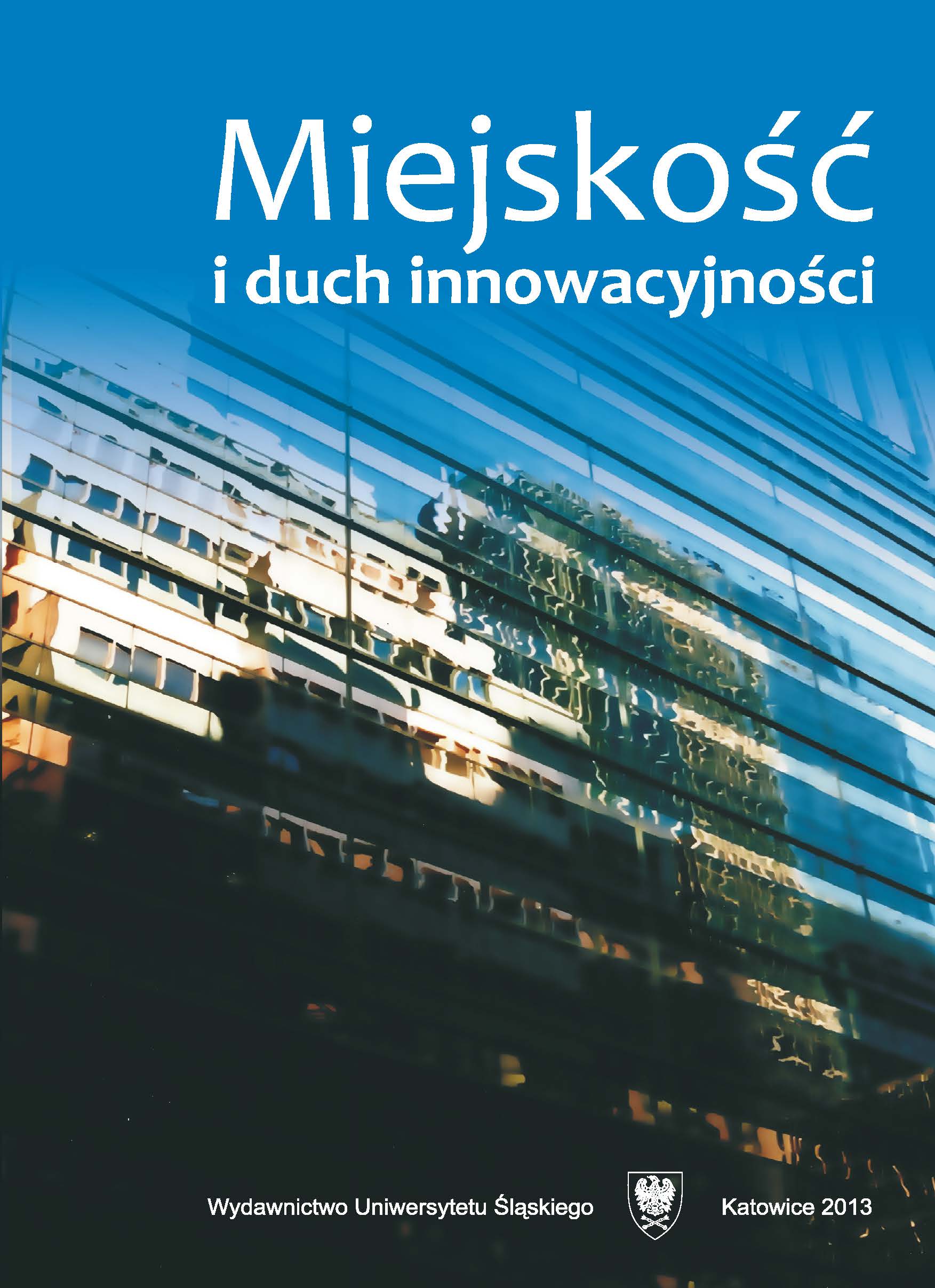Miejskość i duch innowacyjności
Urbanism and spirit of innovation
Contributor(s): Krzysztof Bierwiaczonek (Editor), Marek S. Szczepański (Editor), Karolina Wojtasik (Editor)
Subject(s): Social Sciences, Sociology
Published by: Wydawnictwo Uniwersytetu Śląskiego
Keywords: urbanism
Summary/Abstract: The book contains articles analyzing contemporary social, cultural and politicalphenomena associated with the city and widely understood innovation. The conceptof innovation is presented in the book in number of contexts: civil engagement,urban public spaces, establishing creative industries, promotional campaigns,technology transfer process as well as the new form of commemoratingclose persons by virtual cemeteries. Such a broad spectrum is the result of the researchinterests of the authors, derived from Department of Sociology of Developmentat the Sociology Institute of University of Silesia. Regardless of the wide perspectiveon issues of urban approach and innovation which the book contains,three themes appearing in texts can be recognized.Firstly, contemporary cities are natural living space, space for residence andwork for growing percentage of world population. Although, in case of Poland, rateof urbanization in the past years falls slightly, but it is caused by intensification ofsuburbanization processes connected with residents moving out of large cities tothe area of nearby towns or villages. For many of these people the city is still animportant point of reference, workplace, place for realization of hobby and participationin cultural events. Both for them and for the majority who lives in the city,urban lifestyle and the possibility to realize their own plans in the city, count moreand more. In this context, the quality of public space is fundamental — it shouldencourage to engage in municipal issues, not favor the escape to the “centralizedhome” or to the areas of explicitly commercial and consumer purposes. The datacontained in several texts show that the private sphere dominates over the publicsphere — at least in Poland and Upper Silesia.Secondly, the cities have always been places of innovation and creating newideas. This phenomenon has been strengthened nowadays. Implementation, evenpartial, of the idea of creative and smart city is a good illustration of such redundancy.However it is important not to consider this creativity and innovation onlyin terms of technology and economy. Social innovations which lead to improvingthe quality of urban life are equally important. A good example of it are Scandinaviancities, which successfully combine various dimensions of innovation. Whatis more, in the search for innovation in the economic sphere, the ability to networkco-operation between private and public actors is crucial. Founding the institutionswhich help to transfer innovation and technology or to stimulate them isonly the first step towards a potential success. The examples analyzed in the textsindicate that only the first step has been made.Thirdly, social life takes place in a growing number of parallel virtual worldsthat compete with the traditional city. On the one hand, it is an opportunity to intensifyits communication processes, both those occurring between individuals andsuch relating to promotional, or more broadly — concerning image of the cities. Onthe other hand, the virtual world increasingly poses the threat of separation fromthe physical urban environment. However, as the example of moderate popularityof virtual cemeteries analyzed in the book shows, some of the cultural elementsstill belong to the physical reality. It does not change the fact that virtual and physicalspace interpenetration has become a commonplace.Linking urban issues with reflection on innovation enables to see the city andits community with the new perspective. It allows us to respond differently to importantcontemporary questions: how modern city should look like? How shouldit work? How it can exploit the potential of citizens, institutions and companiesthat operate in the area? The texts included in the publication provide answers tosome of these questions, but more often indicate barriers blocking the cities developmentand the conditions which cities must fulfill to use their latent spirit of innovation.
- E-ISBN-13: 978-83-8012-214-7
- Print-ISBN-13: 978-83-226-2216-2
- Page Count: 178
- Publication Year: 2013
- Language: Polish
- eBook-PDF
- Table of Content
- Introduction

